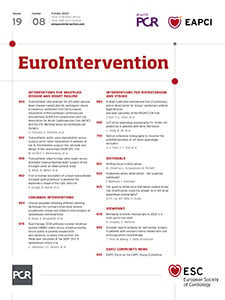Recent European Society of Cardiology (ESC) guidelines on cardiovascular assessment and the management of patients undergoing non-cardiac surgery (NCS) recommend interrupting oral anticoagulation (OAC) therapy for NCS patients with intermediate or high bleeding risk1. For patients with mechanical heart valves or very high thrombotic risk, it is recommended to consider bridging with heparins1. For patients in combination therapy with an antiplatelet agent and OAC, it is recommended to postpone elective surgery until the antiplatelet therapy can be safely discontinued and then follow the general recommendations for perioperative handling of OAC monotherapy1.
In the ESC guidelines concerning patients with chronic coronary syndromes, the general recommendation for patients with an indication for OAC is that antiplatelet therapy be discontinued 6 to 12 months after stent implantation and OAC monotherapy used thereafter2. These patients, even those with coronary stents, may therefore be left without any antithrombotic treatment for up to 6 days or with heparin bridging in the perioperative setting according to the ESC NCS guidelines1.
For patients without an indication for OAC and with previous percutaneous coronary intervention, it is recommended that patients on aspirin continue low-dose aspirin perioperatively unless the bleeding risk is very high1. Likewise, for patients treated with P2Y12 inhibitor monotherapy, it is recommended to consider switching to aspirin perioperatively and, for patients treated with an P2Y12 inhibitor in combination with aspirin, it is recommended to consider interrupting the P2Y12 inhibitor while continuing aspirin perioperatively1. Thus, for all patients with previous coronary intervention and without an indication for OAC, it is recommended to consider continuing aspirin perioperatively unless the bleeding risk is very high.
Concerns for ischaemic events, including stent thrombosis, and the evidence supporting a preventive effect of low-dose aspirin lead to the recommendation of perioperative low-dose aspirin in patients with previous coronary intervention without an indication for OAC1. We have the same concerns for patients with previous PCI with an indication for OAC.
In the cardiovascular assessment and management of patients undergoing NCS, we therefore recommend focusing not only on OAC interruption and potential heparin bridging but also to consider all indications for antithrombotic treatment in each patient individually. If interruption of OAC is needed because of surgery with intermediate or high bleeding risk, we suggest considering not only heparin bridging but also aspirin bridging in patients with previous stent implantation, unless the bleeding risk is very high. A strategy for aspirin bridging could be a bolus dose of 300 mg when OAC is interrupted, followed by maintenance low-dose aspirin 75 mg per day until OAC is restarted. We acknowledge that there are no randomised trials addressing aspirin bridging in these patients. However, in a substudy of the POISE-2 trial, low-dose aspirin in the perioperative NCS setting was associated with reduced ischaemic events (death or non-fatal myocardial infarction) among patients with prior PCI, even those with a median time from PCI to NCS of 5.3 years3. A nested case-control study, with cases representing patients with previous drug-eluting stent implantation, suggested that the interruption of antiplatelet therapy when these patients undergo NCS may be associated with an increased risk of periprocedural ischaemic events (cardiac death, myocardial infarction, or definite stent thrombosis) without a reduction in the need for reoperation for bleeding4. Furthermore, among patients with previous PCI, an observational study suggested that heparin bridging may not provide protection against stent thrombosis, while it may be associated with an increased risk of bleeding (Bleeding Academic Research Consortium [BARC] bleedings ≥2)5. Together, these data suggest that aspirin bridging can reduce the risk of ischaemic events, that aspirin bridging may not be associated with increased risk of bleeding, and that heparins alone probably do not provide the same protection as aspirin in patients with previous coronary intervention.
Therefore, we suggest that bridging with low-dose aspirin should be considered in patients treated with OAC monotherapy who are scheduled for NCS requiring interruption of OAC. This will align the ESC recommendations for all patients with coronary stents undergoing NCS.
Conflict of interest statement
M. Mæng reports a grant from the Novo Nordisk Foundation (grant number NNF22OC0074083); has received institutional research grants from Bayer and Novo Nordisk; consulting fees from Boehringer Ingelheim and Novo Nordisk; lecture fees from AstraZeneca, Bayer, Boehringer Ingelheim, Bristol-Myers Squibb, and Novo Nordisk; and advisory board fees from AstraZeneca, Bayer, Boehringer Ingelheim, Bristol-Myers Squibb, and Novo Nordisk. He is a clinical endpoint committee member of the DANISH-CRT randomised trial (institutional fee); and acted as a data safety committee member of REVACEPT (no fee), a German randomised clinical trial. S. Dalby Kristensen is the national coordinator SOS-AMI (departmental grant) and is on the Data Safety Monitoring Boards of the TACSI, PULSE-MI and DANDAPT trials. He is the ESC Press Lead and past president of the Danish Society of Cardiology. T. Thim has no conflicts of interest to declare.

